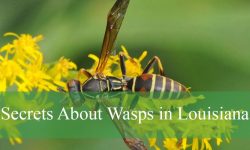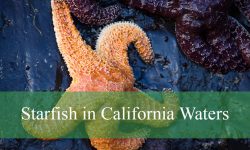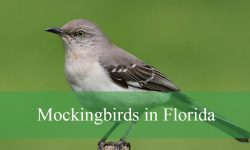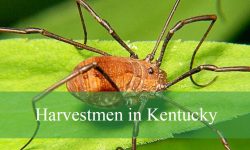After a spring rain in Washington’s temperate forests, the ground glistens with life. Ferns bow beneath raindrops, cedar trees release their earthy scent, and along the mossy floor, a slow-moving figure slides into view — its body shimmering with moisture, leaving a silver trail in its wake. To some, it’s just a garden pest. To others, it’s one of the most fascinating creatures in the Pacific Northwest: the slug.
Though often overlooked or misunderstood, slugs in Washington play a remarkable role in the ecosystem. Beneath their slimy exterior lies a complex biology, evolutionary resilience, and even ecological importance that keeps the region’s lush forests thriving.
This in-depth guide uncovers the hidden facts about Washington’s slugs — their anatomy, behavior, diet, and their surprising intelligence. What you discover about these slow-moving icons of the Northwest might just change the way you see them forever.
Meet the Slugs of Washington

The Slippery Residents of the Evergreen State
Washington’s cool, moist climate is paradise for slugs. From suburban gardens to rain-soaked Olympic forests, they thrive in abundance. Dozens of native and non-native species inhabit the region, each adapted to a specific niche.
The most iconic of all is the banana slug (Ariolimax columbianus) — the state’s unofficial mascot and a beloved symbol of the Pacific Northwest. With its bright yellow body, black spots, and surprisingly gentle personality, the banana slug is both an ecological marvel and a local legend.
Other common species include the gray garden slug (Deroceras reticulatum) and black arion (Arion ater), both introduced from Europe and now widespread throughout Washington’s urban and agricultural areas.
While these introduced species are often considered pests, native slugs are essential to forest health — recyclers, decomposers, and quiet custodians of the soil.
The Banana Slug: Washington’s Rainforest Icon
Found primarily in the Olympic Peninsula, Cascade Range, and Puget Sound lowlands, the banana slug can reach an impressive length of up to 10 inches, making it one of the largest terrestrial slugs in the world.
Its coloration ranges from bright yellow to greenish or brown, depending on its diet and environment. The mucus coating its body helps prevent dehydration and even acts as a defense mechanism, making it distasteful to predators.
In Washington’s rainforests, the banana slug plays a key role in decomposition — breaking down leaves, animal droppings, and fungi to recycle nutrients into the soil. Without them, the forest floor would be choked with debris.
Slow, silent, and resilient, this slug embodies the soul of the Pacific Northwest — patient, steady, and essential.
Anatomy and Adaptation
How Slugs Thrive Without Shells
Unlike their snail relatives, slugs in Washington have evolved to live without external shells. Instead, they have a small internal structure called a mantle, which covers vital organs and secretes mucus to retain moisture.
Their soft, flexible bodies allow them to squeeze through soil, under bark, and between rocks — habitats inaccessible to most other animals. This adaptability has helped them colonize nearly every damp environment in the state.
Because they lack shells, slugs are particularly sensitive to dehydration. That’s why they’re most active during cool, wet conditions — at dawn, dusk, or after rain. On dry days, they retreat underground or into shaded refuges to conserve water.
The Power of Slime
The mucus that coats a slug’s body isn’t just for looks — it’s a multipurpose miracle. It keeps them moist, allows them to move smoothly, and protects their skin from bacteria, fungi, and predators.
This slime has incredible physical properties: it can be both sticky and slippery, strong yet flexible. It even contains compounds that may inspire new biomedical materials and surgical adhesives.
To move, slugs contract waves of muscles along their foot while secreting a thin layer of slime, gliding effortlessly over rough terrain — including blades of grass and tree bark.
In a world obsessed with speed, slugs remind us that progress isn’t measured by pace but by persistence.
Seeing, Smelling, and Feeling the World
Despite their simple appearance, slugs in Washington are highly sensory creatures. They possess two sets of retractable tentacles:
-
The upper tentacles detect light and movement.
-
The lower tentacles sense touch and smell, helping them navigate and locate food.
Their tentacles can retract instantly to avoid damage — and astonishingly, they can regenerate lost ones within days.
A slug’s entire body is covered in nerve endings, allowing it to respond to subtle environmental changes — temperature, moisture, or even chemical signals left by other slugs.
They may move slowly, but their perception of the world is deeply tuned.
The Secret Life of Washington’s Slugs
Nocturnal Wanderers
Most slugs in Washington are nocturnal, venturing out under the cover of darkness or drizzle. During the night, they explore leaf litter, moss, and decaying wood in search of food.
As they move, they leave behind slime trails that help them navigate. These trails can even carry pheromones — chemical signals that allow slugs to find mates or avoid competitors.
In the quiet of a wet night, their silver tracks weave intricate patterns across the forest floor — a hidden art that disappears with the next sunrise.
Slow but Smart
Contrary to their sluggish reputation, these creatures display surprising intelligence. Research shows that slugs can learn from experience — remembering routes, recognizing threats, and modifying behavior after negative encounters.
They’re also capable of associative learning, forming simple memories that guide future decisions. This intelligence, combined with keen chemical senses, makes slugs in Washington skillful navigators in their humid labyrinth of moss and leaf litter.
They may lack a spine, but not sophistication.
Diet and Ecological Role
Nature’s Decomposers
Slugs are essential to Washington’s ecosystems because they are master recyclers. Their diet includes:
-
Decaying leaves and wood
-
Mushrooms and fungi
-
Algae and lichens
-
Fallen fruits
-
Occasionally, small plant seedlings
By breaking down organic material, slugs in Washington return nutrients to the soil, promoting plant growth and supporting the complex web of forest life.
They also help spread fungal spores and plant seeds through their droppings, contributing to forest regeneration.
Without slugs, the lush temperate forests of the Pacific Northwest would lose one of their most important recyclers.
The Garden Problem
Not all slug activity is beneficial, however. Introduced species like the gray garden slug can devastate crops, ornamental plants, and vegetables.
In wet years, gardeners across western Washington wage nightly battles against these invaders, using traps, barriers, and natural predators like ducks and ground beetles.
Still, balance is key. While non-native species pose challenges, native slugs remain valuable players in maintaining soil fertility and biodiversity.
Even the pests remind us how intertwined nature’s systems are — where one creature’s appetite shapes another’s survival.
Reproduction and Life Cycle
Hermaphroditic Wonders
All slugs in Washington are hermaphrodites, meaning each individual has both male and female reproductive organs. This gives them incredible flexibility in reproduction — they can mate with another slug or, in some cases, fertilize themselves.
During courtship, slugs engage in elaborate rituals, circling and touching each other with their tentacles, exchanging pheromones in what can last for hours.
After mating, each lays clusters of translucent, jelly-like eggs in moist soil or decaying wood. Depending on the species and temperature, the eggs hatch within two to four weeks.
Young slugs grow quickly, reaching maturity within a few months. Most species live one to two years, while larger banana slugs can survive up to seven years in the wild.
Slime as a Love Language
Slug mating rituals are nothing short of extraordinary. The banana slug in particular is known for its unusual reproductive anatomy — their organs can be as long as their entire body.
During mating, two banana slugs entwine in a spiral of movement, often hanging from vegetation by a strand of mucus. The event can last several hours and sometimes ends with one partner biting off part of the other’s reproductive organ — a natural adaptation known as apophallation.
Though shocking to humans, it’s a functional behavior that allows the slugs to separate safely afterward — a strange but efficient compromise in the evolutionary world.
Predators and Defense Mechanisms
The Slimy Shield
Without shells or claws, slugs in Washington rely on stealth and mucus for defense. When threatened, they secrete thick, sticky slime that makes them nearly impossible to grasp.
Their mucus also contains chemicals that taste bitter to predators, discouraging birds, frogs, and small mammals from eating them.
Still, they have natural enemies: ducks, garter snakes, salamanders, and ground beetles all feed on slugs. Even so, the balance of predator and prey remains steady — a reflection of nature’s constant negotiation.
The Role of Moisture and Microclimates
Slugs are living barometers of Washington’s weather. Their activity depends on moisture levels, and they retreat underground when conditions grow too dry or cold.
Their presence often signals a healthy, balanced ecosystem — one where moisture, vegetation, and decomposers coexist in harmony.
In essence, the slugs in Washington are indicators of the land’s vitality. Where they thrive, the soil breathes.
Slugs and Humans
Misunderstood Creatures
Many people see slugs as nuisances — garden invaders or slimy pests. But they are much more than that. In Washington’s forests, they are ecological engineers, responsible for nutrient recycling and soil health.
Even in urban settings, their role in decomposition and seed dispersal supports green spaces and natural cycles.
When viewed through this lens, slugs in Washington become symbols of patience and quiet contribution — creatures that enrich life simply by existing.
Slugs in Science and Culture
Washington’s slugs, particularly the banana slug, have become cultural icons. The University of California, Santa Cruz famously adopted the banana slug as its mascot — a tribute to the quirky, resilient nature of the species.
Scientists continue to study slug mucus for potential medical uses, including wound dressings and tissue adhesives. The more we learn about them, the clearer it becomes that these “simple” creatures hold complex biological secrets with potential benefits for humanity.
In folklore and art, the slug’s slow pace often symbolizes humility, persistence, and the quiet strength found in nature’s most unassuming forms.
Myths and Misconceptions About Slugs
Myth 1: Slugs Are the Same as Snails
False. While related, slugs evolved without external shells, giving them greater flexibility and habitat access.
Myth 2: All Slugs Are Pests
False. Only a few introduced species harm crops; most are beneficial decomposers.
Myth 3: Slugs Can Survive Salt
False. Salt dehydrates and kills slugs by destroying their mucus barrier.
Myth 4: Slugs Are Simple, Primitive Creatures
False. They possess advanced sensory systems, learning ability, and regenerative powers.
Myth 5: All Slugs Are Brown or Gray
False. Slugs in Washington display a spectrum of colors — yellow, green, spotted, or translucent — depending on species and environment.
Conservation and Ecological Balance
Protecting the Humble Decomposer
Like many small creatures, slugs in Washington face threats from habitat loss, pesticide use, and invasive species. Urbanization and soil compaction reduce the moist habitats they rely on.
Protecting slugs means protecting the ecosystems they support. Simple actions — minimizing chemical use, leaving leaf litter, and maintaining shaded soil — can preserve the biodiversity that makes Washington’s landscapes so rich.
By respecting even the smallest lives, we strengthen the larger cycles that sustain all others.
The Future of Slugs in a Changing Climate
As Washington’s climate shifts, warmer, drier summers could threaten native slug populations while favoring invasive species.
Conservationists and scientists are now studying how banana slugs adapt to fluctuating moisture patterns — a key to understanding resilience in forest ecosystems.
In the end, the story of slugs in Washington is a story of adaptation. They remind us that survival isn’t about dominance but balance — a lesson as timeless as the forests they inhabit.
Surprising and Little-Known Facts About Slugs in Washington
-
The banana slug can stretch its body up to 20 times its width to squeeze through tiny gaps.
-
Slug mucus contains anesthetic properties that may one day be used in medicine.
-
Some slugs in Washington glow faintly under UV light.
-
Banana slugs have four noses and can regrow them if lost.
-
They can detect chemicals in the air to locate food from several meters away.
-
Their mucus trail acts like a GPS, helping them find their way back to favorite feeding areas.
-
They can self-fertilize if no mates are nearby.
-
Banana slug slime is so thick that it can even deter snakes.
-
Slugs play a major role in spreading fungi vital to forest tree growth.
-
Their trails can last for days, glimmering like silver ribbons after rain.
FAQs About Slugs in Washington
What types of slugs live in Washington?
Common species include the banana slug, gray garden slug, and black arion, among others.
Are banana slugs poisonous?
No. They are harmless to humans and even handled gently during nature programs.
Why are slugs so common in Washington?
Because of the state’s moist climate, abundant vegetation, and mild temperatures — ideal conditions for slugs.
How do slugs reproduce?
They are hermaphrodites and can mate with others or self-fertilize if needed.
Do slugs have predators?
Yes. Ducks, beetles, frogs, snakes, and salamanders feed on them.
How long do slugs live?
Most live one to two years, though banana slugs may live up to seven.
Why are slugs important?
They recycle nutrients, spread seeds, and maintain healthy soil ecosystems.
Are all slugs invasive?
No. Many species, including banana slugs, are native and beneficial.
How do I keep slugs out of my garden naturally?
Use copper barriers, crushed eggshells, and maintain dry soil surfaces.
Do slugs hibernate?
Yes. In winter, they burrow into soil or leaf litter to remain dormant until spring.
Final Thoughts
In the misty forests and rainy gardens of the Pacific Northwest, slugs in Washington carry on one of nature’s quietest yet most vital stories. They move slowly, unseen by most, yet every trail they leave enriches the earth beneath our feet.
They are recyclers, survivors, and symbols of patience — proof that life’s smallest creatures can hold the biggest secrets.
The truth about slugs in Washington is simple: they are not pests to be feared but participants in the grand symphony of nature — slimy, silent, and absolutely essential.






